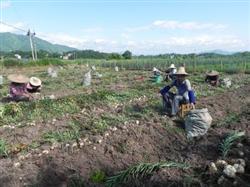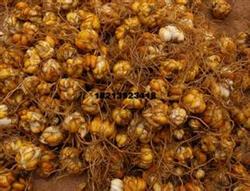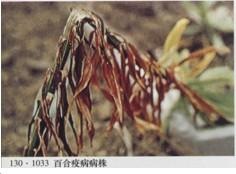Harvesting and Storage of Lily bulbs

1. Seed ball mining when the temperature begins to drop in autumn, the aboveground stem has begun to die, and the mother ball develops to a certain extent, the seed ball is dug in sunny days. Before digging, the dead stems of the aboveground must be extracted and burned centrally, so as to reduce the pathogen. At the same time, pay attention to mining do not damage scales, or remove damaged scales, in order to reduce decay. 2. The treatment of seed balls before storage the seeds should be graded, cleaned, disinfected, packaged and so on before storage. The main results are as follows: (1) generally speaking, the larger the bulb of lily, the more the number of flowering, and if the bulb is small, the number of flowering is less. Therefore, the classification of planting balls is beneficial to planting trees separately and is easy to manage. After mining, it is necessary to separate the big and small seed balls, and the standard of classification is that the mother balls are in a group and the daughter balls are in a group. At the same time, pay attention to the following aspects: if the scales are found to be rotten, they should be removed in time. If the perimeter of the bulb is about 12 cm, it can be used for cut flower cultivation. Small bulbs that have sprouted or grown new roots can be cultivated immediately, do not damage new roots and buds. The large bulbs with new roots should be grouped into one group, which could not be treated at low temperature at-2 ℃. (2) it is decided whether or not to clean the seed balls that have been dug depending on the amount of soil in the belt. Those with more soil can be cleaned. It is not necessary to clean the seed balls planted in sandy loam if they are dug in sunny days. The removal of much soil is beneficial to the disinfection treatment before storage and to the elimination of diseases and insects in the soil. (3) the seed bulb should be disinfected in order to prevent and cure virus disease, rot disease and leaf spot disease. Disinfection treatment is generally carried out 1-2 times, the first time before the seed ball into the cold storage, the second time after the seed ball out of the cold storage, before planting. If it is long-term storage, that is, 8-12 months, it is necessary to carry out the above secondary disinfection treatment; if it is short-term, that is, within 8 months, only the first disinfection treatment can be carried out. (4) Packaging should be packed before storage in order to facilitate the management of the storage period. The package is a plastic film (0.22%) after strict cleaning and disinfection. The plastic film should be punched 14-18 holes for ventilation. In addition, fillers with a certain water content must be used. Wet sawdust or moss can be selected. Attention should also be paid to strict disinfection of fillers. The packing method is to first put the plastic film into the box, then put a layer of filler at the bottom of the box, its thickness is 5 cm, put a layer of seed ball on the filler, and note that the same layer of seed ball must be separated by the filler. after the box is full, close and fasten the plastic film. 3. Storage of lily bulbs after harvesting, in order to achieve annual flowering, low temperature treatment and storage must be carried out.
- Prev

Main Diseases and pests of Lily and their Control
After sowing, lilies need to be cultivated and managed for several years in order to obtain commercial bulbs that can be harvested. Generally, asexual reproduction is used to obtain seed balls, or seed propagation can be used to obtain seed balls first, and then seed balls are planted in the field to grow into commercial lilies through field management. The bulb is first cultivated into a small size of 50g and 100g with various breeding materials.
- Next

Control of common diseases and insect pests in lily cultivation
Lily blight, also known as lily foot rot, is distributed in Hebei, Gansu, Shaanxi, Shandong, Zhejiang, Jiangxi, Henan, Hubei, Hunan, Sichuan, Guizhou, Yunnan, Xizang and other provinces. First, damage symptoms: mainly invade stems, leaves, flowers, scales and bulbs. Stem infected newborn water immersion brown rot, one by one.
Related
- Fuxing push coffee new agricultural production and marketing class: lack of small-scale processing plants
- Jujube rice field leisure farm deep ploughing Yilan for five years to create a space for organic food and play
- Nongyu Farm-A trial of organic papaya for brave women with advanced technology
- Four points for attention in the prevention and control of diseases and insect pests of edible fungi
- How to add nutrient solution to Edible Fungi
- Is there any good way to control edible fungus mites?
- Open Inoculation Technology of Edible Fungi
- Is there any clever way to use fertilizer for edible fungus in winter?
- What agents are used to kill the pathogens of edible fungi in the mushroom shed?
- Rapid drying of Edible Fungi

